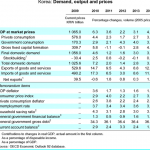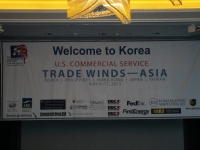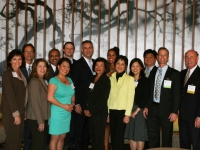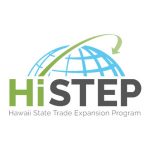Korea Mission
Trade Winds Asia (Korea Mission)
May 12-15, 2013 Seoul, South Korea
DBEDT, in partnership with the Economic Development Alliance of Hawaii, led a mission of eight Hawaii companies to Seoul, South Korea to participate in Trade Winds Asia, from May 12-15, 2013. Participants included Hawaii Kai Corp., Hawaii Biotech, Hawaii Exports International (representing various Hawaii coffees and mac nuts), Koloa Rum, Honolulu Coffee Co., Tradewinds Global (representing a line of pet products), e- Tour, and Alston Hunt Floyd & Ing. Trade Winds Asia was organized by the U.S. Department of Commerce/U.S. Commercial Service, and included a business development conference, meetings with Sr. Commercial Officers from 13 posts throughout the Asia Pacific region, and one-on-one business meetings for participating companies. Actual and projected sales resulting from this trade event are expected to exceed $3 million. The HiSTEP Program is funded in part through a Cooperative Agreement with the U.S. Small Business Administration.
Economy – overview:
South Korea over the past four decades has demonstrated incredible growth and global integration to become a high-tech industrialized economy. In the 1960s, GDP per capita was comparable with levels in the poorer countries of Africa and Asia. In 2004, South Korea joined the trillion dollar club of world economies, and is currently the world’s 12th largest economy. Initially, a system of close government and business ties, including directed credit and import restrictions, made this success possible. The government promoted the import of raw materials and technology at the expense of consumer goods, and encouraged savings and investment over consumption. The Asian financial crisis of 1997-98 exposed longstanding weaknesses in South Korea’s development model including high debt/equity ratios and massive short-term foreign borrowing. GDP plunged by 6.9% in 1998, and then recovered by 9% in 1999-2000. Korea adopted numerous economic reforms following the crisis, including greater openness to foreign investment and imports. Growth moderated to about 4% annually between 2003 and 2007. Korea’s export focused economy was hit hard by the 2008 global economic downturn, but quickly rebounded in subsequent years, reaching 6.3% growth in 2010. The US-South Korea Free Trade Agreement was ratified by both governments in 2011 and went into effect in March 2012. Throughout 2012 the economy experienced sluggish growth because of market slowdowns in the United States, China, and the Eurozone. The incoming administration in 2013, following the December 2012 presidential election, is likely to face the challenges of balancing heavy reliance on exports with developing domestic-oriented sectors, such as services. The South Korean economy’s long term challenges include a rapidly aging population, inflexible labor market, and heavy reliance on exports – which comprise half of GDP.
2012 |
Ranking in the world |
|
| GDP | $1.61 trillion | 13 |
| Per Capital | $32,400 | 43 |
| Labor Force | 25.5 million | 25 |
| Inflation | 2.20% | 41 |
| Imports | $514.2 billion | 8 |
| Exchange rate | 1,126.8 won /$1 |
Imports – partners:
China 16.5%, Japan 13%, US 8.5%, Saudi Arabia 7.1%, Australia 5% (2011 est.)
Import goods:
machinery, electronics and electronic equipment, oil, steel, transport equipment, organic chemicals, plastics
Source: CIA
Korea – Economic forecast




